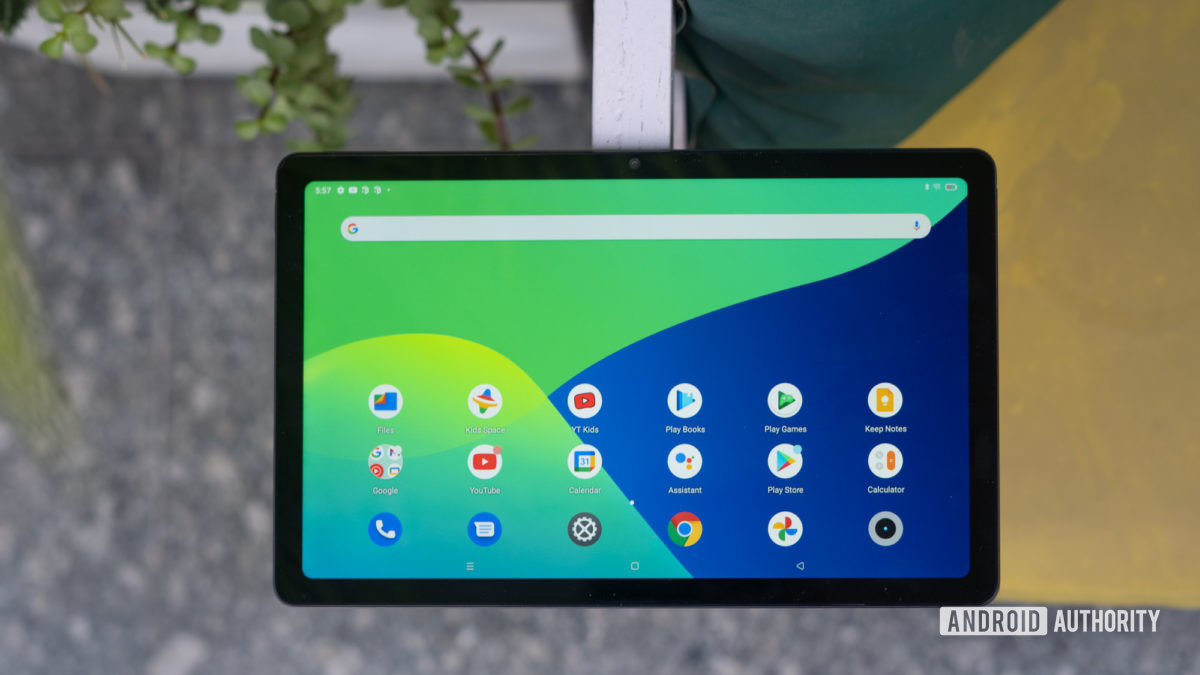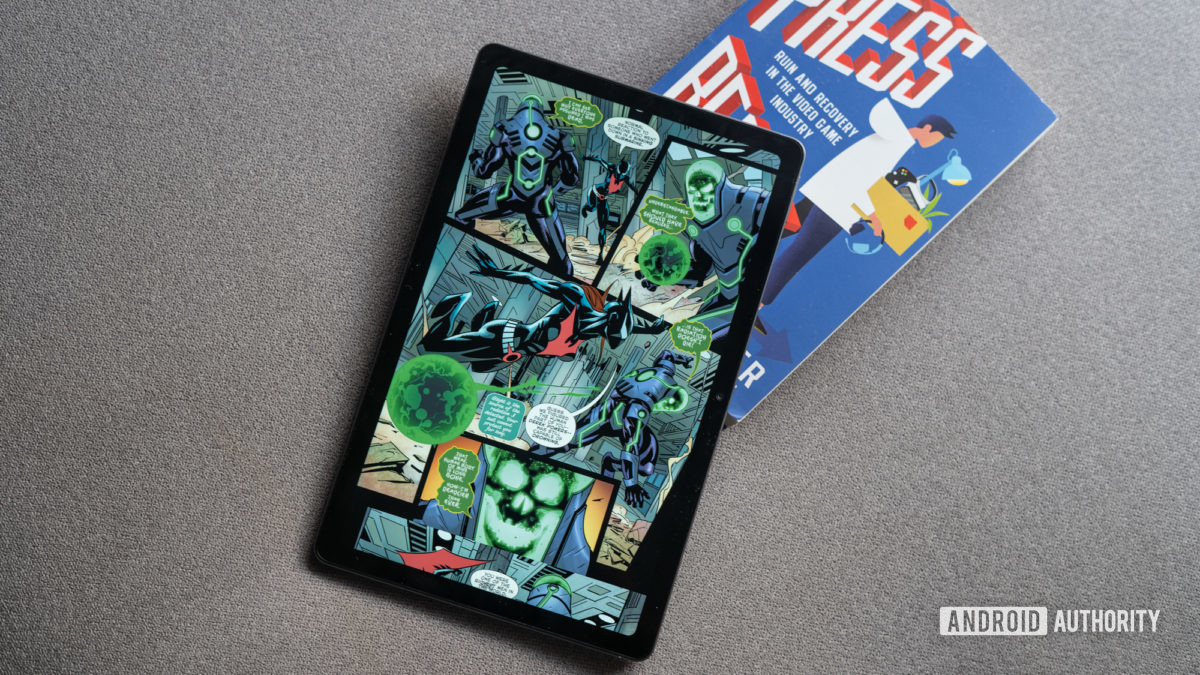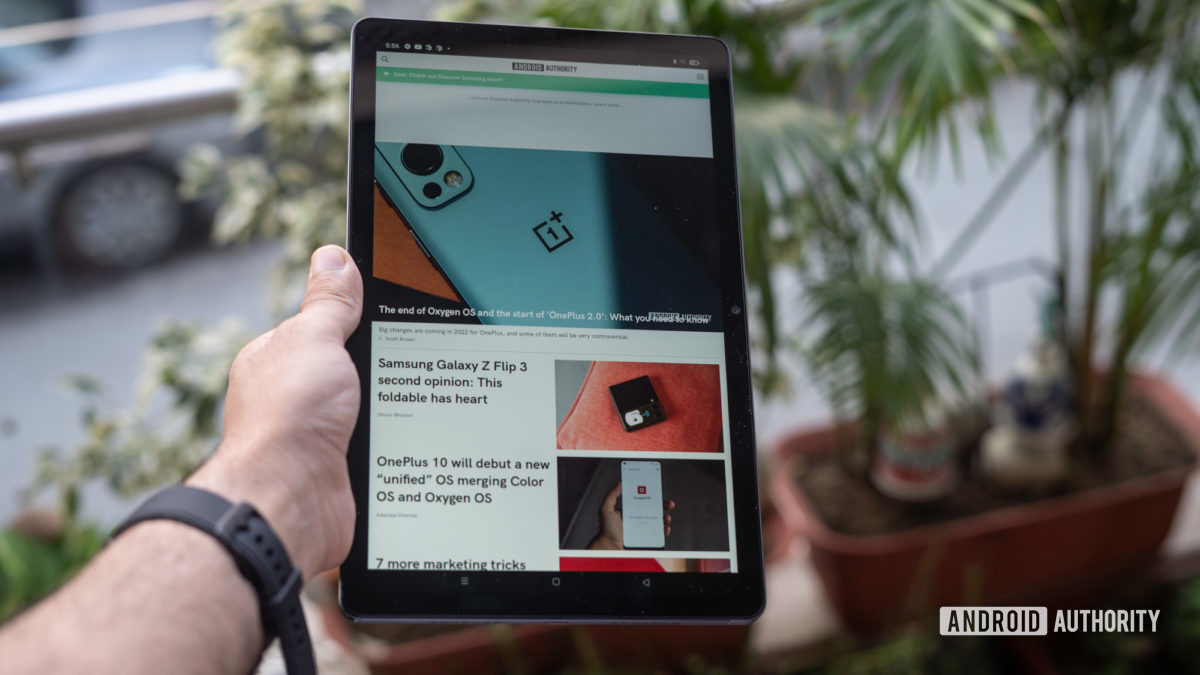There’s no denying that the Android tablet ecosystem is in poor health. In fact, it’s less of an ecosystem than a glut of middling entry-level tablets and the odd flagship Samsung tablet that too is held back by Google’s step-fatherly treatment of tablet software. Realme’s entry into the space comes with an intent to disrupt the otherwise two-horse race between Lenovo and Samsung, alongside a bunch of budget alternatives. In the Android Authority Realme Pad review, we see if Realme’s tablet efforts can bring a spark back to the affordable tablet segment.
What you need to know about the Realme Pad

- Realme Pad (3GB/32GB): Rs. 13,999 (~$190)
- Realme Pad (3GB/32GB Wi-Fi + LTE): Rs. 15,999 (~$218)
- Realme Pad (4GB/64GB Wi-Fi + LTE): Rs. 17,999 (~$245)
- Realme Pad (6GB/128GB): To be announced
The Realme Pad is the company’s first entry into the tablet space, as well as the first tablet from the broader BBK stable. It comes as no surprise that the Shenzhen-based company wants to carve out a niche for itself in the entry-level space. Available in three different configurations, the tablet is focused on providing a compelling multimedia and browsing experience. While the entry-level version is geared towards home use, the addition of LTE capabilities suggests that Realme expects users to carry the tablet out and about.
The Realme Pad is currently only available in India (outside of China), where it enters a fairly spartan category of budget Android-based tablets. In fact, the only real competition comes from the Galaxy Tab A7 Lite and the Galaxy Tab A7 at two different price tiers, as well as Lenovo’s M10 series. Suffice it to say, there’s room for disruption — something Realme has excelled at with its smartphones.
See also: The best cheap Android tablets
The Realme Pad is on sale now starting at Rs. 13,999 (~$190) via Realme.com as well as Flipkart and offline retailers. The tablet is available in two colors: Real Gold and Real Grey (tested).
We tested two variants for this review, the 4GB/64GB version (tested by me) and the yet-to-be-released 6GB/128GB model (tested by my colleague, Kris Carlon). The latter version is expected to launch in Europe at a later date, though availability and a firm release window were not available at the time of writing. There is no word if this variant will make its way to India.
What’s good?

Despite being a budget offering, Realme hasn’t skimped out on build quality. Chiseled out of a piece of aluminum, the Realme Pad feels sturdy and strong. There’s a mild amount of flex but it wasn’t an issue for me even while holding the tablet up for long durations of time reading graphic novels and magazines.
The 10.4-inch screen too is plenty good. The 2,000 x 1,200 resolution is a bit odd, and so is the 15:9 aspect ratio, but it scales reasonably well for media. Graphic novels with long panels looked rather good on the screen.
You won’t be getting premium trimmings like an AMOLED panel or a high refresh rate here, which is understandable given the pricing. However, what’s here is good and the panel is vibrant with minimal color shift at extreme angles.

Unlike a phone, tablets are designed for impromptu pick up and drop use cases, and as such, long standby times are key. The Realme Pad excels at that task. The 7,100mAh battery is no joke and a week of daily use later, the tablet still had charge left over. The second unit we had on hand to test fared equally well with nine hours of screen on time and a week of use between top-offs. Clearly, the standby drain on the tablet is minimal. Aggressive use with a lot of gaming will, predictably, put a dent in battery life but for reasons we’ll talk about shortly, I don’t expect that to be an issue for a lot of users.
The long standby times and excellent battery life ensure that you can go days between charging up the tablet.
Other features worth mentioning include Dolby Atmos compatible speakers that sound crisp and clear. The speakers go loud enough to fill a small room and make for a good companion to the display for long hours of media consumption. Users will also appreciate the headphone jack and microSD slot to augment storage.
What’s not so good?

While the screen is great, I have a gripe with the limited brightness levels. Peaking at 360 nits, it’s sufficient indoors, but the reflective screen can be a pain to read under direct sunlight. It is also prone to catching fingerprints which makes outdoor visibility even worse.
If there’s a caveat to the excellent battery life it’s that it takes a fair while to recharge. Using the bundled 18W charger, the Realme Pad takes two hours and 45 minutes to charge. That’s not the worst time we’ve seen from a tablet (especially with a battery of this size), but it’s hardly fast. It does support reverse wireless charging for accessories though.
Performance on the Realme Pad is to put it plainly, not very good. The MediaTek Helio G80 is an entry-level chipset and it really shows here. Games like Call of Duty: Mobile and Asphalt 9 stutter even with the graphics turned all the way down — a gaming tablet this ain’t.
Moreover, the limited amount of RAM on the low- and mid-level models is very problematic. I have the 4GB variant on hand and apps constantly dropped out of memory. App crashes were common and I suspect this issue will be a lot worse on the 3GB RAM version.
The Realme Pad is plagued with middling performance and buggy software.
We ran a quick run of our in-house benchmark, Speed Test G, to gauge differences between the 4GB model I tested and the 6GB version likely destined for Europe. Predictably, the higher-end model fared a bit better but the results aren’t drastically different. That said, the higher amount of RAM made a marked difference in day-to-day usability, and it is a shame that this variant isn’t being fielded globally.
Despite running nearly stock Android, the software is fairly buggy. The most prominent of these is the broken Amazon Prime Video implementation. By default, the app will simply not play any videos. I reached out to Realme, and the solution offered was to turn off hardware acceleration. However, this switches over the stream to standard definition. That’s not ideal.
Related: Your guide to the best tablets
The lack of polish extends to the rest of the software experience as well and app crashes were common. Personally, I’m conflicted about the use of near-stock Android skin on the Realme Pad. On one hand, I definitely appreciate the lack of bloatware. However, Realme UI on the company’s phones adds a plethora of customization options that would’ve been a good fit on the tablet. Dubbed Realme UI for Pad, the operating system is, for better or worse, stock Android with a smattering of custom icons in the name of customization.
For those who want on-the-go connectivity, two of the three variants ship with LTE connectivity. It feels like a bit of a waste, though. The screen just isn’t bright enough to be comfortably used outdoors and the performance isn’t good enough for any serious productivity.
Finally, if you are the kind to shoot photos with your tablet, the eight-megapixel sensors will serve in a pinch. The rear camera shoots reasonably detailed images, though the low-light shots are nothing to write home about. The front camera is a bit soft but does the trick for quick video calls.
Realme Pad specs
| Realme Pad | |
|---|---|
| Display | 10.4” WUXGA LCD 2,000 x 1,200 60Hz 360 nits |
| Processor | MediaTek Helio G80 2 x Cortex A75 @ 2.0GHz 2 x Cortex A55 @ 1.8GHz Mali-G52 MCC2 GPU |
| RAM | 3GB/4GB eMMC |
| Storage | 32GB or 64GB Expandable up to 512GB with microSD slot |
| Cameras | Rear: 8MP Front: 8MP |
| Battery | 7,100mAh |
| Ports | USB-C Headphone Jack |
| Network | Wi-Fi 802.11 a/b/g/n/ac 2.4G+5GHz Wi-Fi Direct Bluetooth 5.0 Optional LTE |
| Dimensions | 246.1 x 155.9 x 6.9mm 440g |
| Operating System | Android 11 Realme UI for Pad |
| Colors | Real Grey, Real Gold |
Realme Pad review: Should I buy it?

The Realme Pad has the bones of a decent tablet for browsing and streaming movies, but as it stands, the product isn’t quite there yet. Many competing products are equally under-spec’d which makes it hard to point fingers at Realme for the mediocre performance. However, for a brand that regularly champions high-spec devices at value prices in many other product categories, the middling Realme Pad comes across as a disappointing outlier in its portfolio.
The Realme Pad’s entry-level versions are too underpowered and the top-end version commands too high a price for the buggy experience.
To add to that, the available models are suspiciously skewed to push you towards higher-end versions. 3GB of RAM simply isn’t enough on a half-decent Android device in 2021 and my experience with the 4GB RAM wasn’t great either. Plus, you can’t currently buy the top-of-the-line 6GB RAM version of the Realme Pad.
Check out: The best cheap tablets of 2021
That leaves the 4GB/64GB variant as the only viable option right now, and at a price of Rs. 17,999 (~$245), the Realme Pad is a very tough sell for the budget hardware and underwhelming software experience. If you want a basic Android tablet for watching movies and shows on a big portable screen, it might still be worth taking a look at, but that’s only because of the less-than-stellar alternatives for the price.
The best competition comes from the similarly priced Samsung Galaxy Tab A7 (Rs. 18,999/$229.99) which combines a sturdy chassis with refined software and performance that exceeds Realme’s option in a few key areas. For a truly stellar affordable tablet experience, there’s always the new 9th generation iPad (Rs. 30,000/$299). At almost double the price in India, Apple’s tablet is in a whole different category altogether, but it could be the obvious winner in Europe if the Realme Pad isn’t priced correctly in the region.